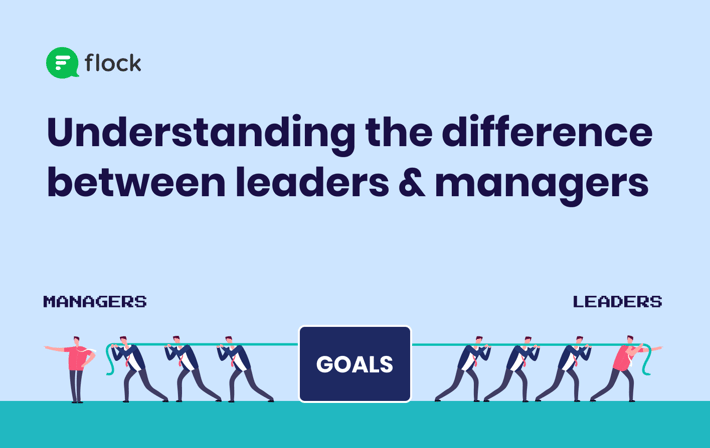Image by fauxels on Pexels
A recent survey with 5,188 respondents in the United States found that most workers are happy with their jobs. However, only a few are satisfied with their employer-sponsored benefits.
Dissatisfaction with employee benefits varies for each employee. They may be unable to use these benefits due to unnecessary inclusions, limited coverage, a lack of flexibility and personalization, and outlandish costs.
As an employer, you should ensure your benefits programs suit your employees. Why should they be satisfied with these perks, and how can you formulate incentives that ensure job satisfaction?
How do employee benefits contribute to your business's growth and success?
Employee benefits aim to improve and ease your employees' quality of life. Here's why it's essential to your business:
They show you care about your employees
A good benefits program shows that you care about your employees. Benefits like wellness programs and paid time off make employees feel you value their well-being. These perks can increase job satisfaction, motivating them to accomplish tasks proficiently.
Additionally, fostering a sense of community within your workplace can greatly contribute to employee satisfaction. Encouraging employees to engage in social responsibility initiatives, such as participating in CSR team building programs, can enhance workplace relations and personal fulfillment. These programs not only benefit external communities but also create shared experiences that strengthen internal teamwork and boost overall morale in the company.
Benefits programs can also strengthen workplace morale, creating a happier and more productive team. This productivity ensures your team is communicating and collaborating efficiently. Moreover, employee incentives can minimize turnover rates, establishing stable departments and management within your organization.
They foster a sense of loyalty and encourage professional development
A well-designed employee benefits program can cultivate a sense of loyalty among employees. Your workers are more likely to stay and contribute to your organization’s long-term growth.
Employee benefits such as career development programs can encourage employees to invest in their professional advancement, helping enhance their skills and your company’s competitiveness.
Thus, these incentives can reinforce a robust employer-employee relationship that supports company success.
They encourage work-life balance
Employees value work-life balance. They want careers that give them enough time to pursue personal endeavors, be with their family, and socialize with friends.
As such, many incentive programs promote work-life balance by providing a reasonable number of paid time off and flexible working hours. These perks enable better time management and vacation leaves to prevent stress, fatigue, and burnout.
These incentives also allow employees to spend more time with their loved ones, which is essential for parents juggling career, childcare, and family responsibilities.
Moreover, employee benefits that support work-life balance can foster creativity and innovation.
With the flexibility and time to enjoy hobbies and pursuits outside of work, they gain new experiences that can inspire creative problem-solving and innovative perspectives. Therefore, employees can return with renewed energy and refreshed mindsets that benefit their performance.
As a result, your company cultivates an environment where creativity thrives, helping boost productivity and business growth.
They provide medical coverage
People say, "Health is wealth." Although cliché, it is a statement that will always be true and timely. Your enterprise won't thrive without healthy employees.
Benefits programs include healthcare coverage that helps employees pay for medical expenses by making regular checkups, prescription medicines, preventative care, and medical treatments affordable. For instance, an employee who requires regular medication needs comprehensive healthcare coverage.
Furthermore, good health benefits encourage employees to stay healthy, reducing sick days and making them more energetic and efficient at work.
Comprehensive healthcare coverage can also provide peace of mind, letting employees work without constantly worrying about potential medical expenses.
Let’s say you have an employee who is expecting a child. Without health benefits, the financial strain of the inability to work during medical appointments, late pregnancy, and recovery can be distressing.
An employee benefits program’s healthcare coverage with maternity leave, prenatal care, and postnatal support can provide substantial relief during these phases. This way, you reassure the company’s support so they can return healthy.
They help kickstart your employees' retirement planning
Many employees engage in retirement planning as early as possible to ensure financial security. Benefits programs provide retirement perks, such as defined contribution and defined benefit plans.
Defined benefit plans are traditional pension plans that provide regular payouts—usually monthly—to employees. These incentives are based on factors like employment length and salary. They can allow extra contributions so employees can increase their predicted payouts.
Meanwhile, defined contribution plans—401(k) and 403(b) plans—are perks that require contributions in retirement accounts. Employers like you can also contribute to make matched contributions. Employees can invest these contributions into target-date, mutual, or exchange-traded funds.
You can also use particular individual retirement accounts (IRAs) as defined contribution plans, encouraging employees to open an IRA account.
These retirement benefits provide employees with structured ways to save money and secure their futures. When they retire, they won't worry about their finances because they have predetermined income from their retirement plans.
They entice and retain top talent
Benefits are significant factors for employees transitioning careers and candidates applying for positions. They ensure the recognition of skills and the provision of equitable compensation.
Providing well-thought-out and enticing incentives can significantly enhance your organization's ability to attract and retain top-tier talent, ultimately giving you the upper hand in a highly competitive market.
Another key element in attracting and retaining talent—especially within competitive industries like recruitment—is implementing strategies aligned with an effective recruitment agency growth strategy. Agencies prioritizing comprehensive benefits alongside innovative approaches for scaling can see improved operational efficiency and company reputation. If you're interested in actionable steps and insights into scaling your recruitment firm successfully, discover this detailed guide on shaping a robust recruitment agency growth strategy.
Besides compensation, benefits show that your company is financially secure enough to support your employees. They also show you believe and value your employees, enticing top talent to apply because they see a positive and healthy workplace culture. Consequently, these high-performing candidates are less likely to be tempted by other job offers when they see yours.
Image by Sora Shimazaki on Pexels
How To Formulate Your Employee Benefits Programs
Managing incentive programs is costly, but it is essential. While employers are generally required to provide worker's compensation, Social Security, and unemployment insurance, most benefits are voluntary. These perks typically include paid time off, medical, life and disability, retirement, and educational assistance.
Since employee benefits are critical in recruitment and retention, you should have organized programs that meet your objectives and employees' needs. Here's how to create well-defined incentive plans:
Consider your organizational structure and financial resources
The first step involves aligning your objectives with your organizational structure and financial resources, which will guide your selection and designing process.
When creating your benefits programs, you must focus on your location, industry, and employee size.
- Location: Different localities usually have different regulations regarding employee benefits. The cost of living also varies
- Industry: Competition for hiring top talent is unique to each industry. If your industry has high demand, you'll need highly enticing benefits programs
- Employee Size: Larger enterprises have more bargaining power to negotiate better rates, while small businesses need to be mindful of their allocation of limited financial resources
If you have existing incentive programs, you must create a budget plan outlining annual costs. This plan lets you track the cost fluctuations affecting your incentive offers.
By tracking the cost changes, you can identify areas requiring adjustments to keep the program within the budget. If certain incentives are inevitably becoming more costly, you can restructure the programs or find cost-effective alternatives.
Also, a comprehensive budget plan helps forecast future expenses, ensuring that your company can anticipate and plan for potential financial setbacks of your incentives.
Understand your employees' needs through needs assessment
After defining your objectives, conduct a needs assessment. This evaluation includes employee inquiries through questionnaires or personal interviews, which will help you understand their needs.
You should also analyze your workforce demographics to tailor the incentives to their needs. For instance, younger employees may prefer paid time off more, while older employees prefer retirement benefits.
However, needs assessments aren’t just about collecting general data. They also require in-depth analysis to uncover patterns, preferences, and nuances in your workforce’s perception of the incentives.
This analysis might involve identifying trends based on the responsibilities and workloads.
Additionally, it would be best to consider career and lifestyle changes that influence your employees’ preferences.
By combining quantitative and qualitative insights, you can develop employee benefits packages that cater to the unique needs of each staff, ensuring a higher level of satisfaction and usage.
Concurrently, you'll need to consider legal requirements. You should determine if you're covered by the Affordable Care Act, which mandates companies with 50 or more employees to provide health insurance.
Create your employee benefits programs
Using your objective and needs assessment results, create your benefits programs. Outline the incentives based on priority, determine the costs, and assess their financial feasibility.
Since this step can be complex, here are the factors to consider:
- Potential benefits that may be underused - Review existing employee benefits to identify those not fully utilized by employees. If specific programs aren’t resonating with them, consider redesigning or phasing them out.
- Administrative costs - To ensure efficient budget management, evaluate your current administrative costs, such as product launches, salaries, and other general expenses.
- Cost containment - Employee benefits costs can increase over time. Including this factor when creating your benefits programs will help you implement measures that help contain overall costs, such as flexible spending accounts and voluntary benefits.
- Possible changes in the existing design - The design of your existing benefits programs may require updates to stay relevant. Identify coverage gaps, redundancies, and mismatched priorities and adjust accordingly.
- In-house resources - Evaluate the capacity of your internal team to administer and manage the programs. They should have ample expertise, time, and tools to handle enrolment, claims, and queries.
- Outsourcing brokers - If in-house resources are limited, consider partnering with brokers. They can help ease administrative burdens, negotiate better rates, and optimize the benefits mix.
Get feedback from your employees
Communicating with your employees about the incentive structures is crucial. Although you had a needs assessment, their feedback still matters after formulating the plans.
No matter how perfect your benefits programs are, they might still need feedback to meet your employees' needs. You should let them know how their insights influenced the incentive designs.
Communicating your benefits plans includes:
- Transparent disclosure
- Creating awareness about enhancing financial security
- Encouraging informed and wise use of incentives
To gather feedback about your employee benefits, you can start by conducting surveys. You must tailor the questions to the specifics of the programs and include open-ended prompts to let employees provide detailed feedback and improvement suggestions.
Surveys can also encourage more honest responses because they provide anonymity.
You can even facilitate focus groups for structured and open-ended discussions, letting employees share their thoughts about the programs. These conversations provide qualitative data that can highlight nuanced issues.
Another approach is maintaining physical and digital suggestion boxes, which allow employees to share opinions and suggestions anytime.
Additionally, these boxes are ideal for employees who hesitate to participate in surveys, interviews, or focus groups. You can ensure all voices are heard and fine-tune your programs through multiple channels to better meet your employees’ needs.
Establish a periodic evaluation process to assess the plans' effectiveness
Benefits programs require regular effectiveness assessments. These periodic evaluations determine whether the incentives meet your objectives and employee needs.
Economic, demographic, and regulatory changes affect the benefits structures. Evaluations enable you to make the necessary adjustments based on these significant changes. You may also conduct regular employee surveys or needs assessments.
During these evaluations, you must study satisfaction levels, usage rates, and employee engagement metrics. This data will help reveal the most valued and underutilized benefits, guiding decisions on enhancing or eliminating specific offerings.
Furthermore, periodic assessments enable you to implement emerging industry trends and regulatory requirements. By staying informed about these practices, you can refine the program structures to ensure compliance with the law and employee satisfaction.
These adjustments are crucial to maintaining employee benefits programs that support company success.
Cultivate a Positive Employee Experience
Employee benefits are investments that can significantly drive a company's success. They contribute to talent attraction and retention, productivity improvement, and overall workforce well-being.
Employees can become life-long advocates of your organization to strengthen its reputation. This word-of-mouth promotion can solidify your company’s standing as a desirable workplace, attracting highly skilled talent.
Additionally, you can build a resilient workforce with greater adaptability to embrace and navigate challenges effectively. This flexibility helps ensure your company’s scalability.
By offering a competitive benefits package, you can position your company as a leader in your industry, ultimately reaping the rewards of a motivated, dedicated, and successful workforce.




